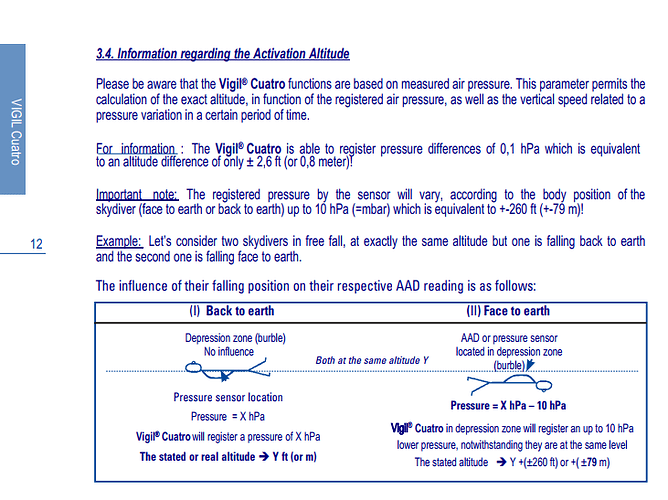I want to be honest with over 200 jumps on the device I often do not use until under canopy. I rely on my dyter most times, however, recently at break off I have glanced to it and noticed altitude was way off and if I used it for decision at pull time I am off between 500-700 feet before. It is always accurate under canopy and on the plane ride and for the most part in free fall but who is really referencing in a 10K free fall for a deviation of 500-700 feet most times. So recently the last few jumps I have been looking more to the device at break off and deployment. Seems it may get more off during the track at break off. Seems breakoff is inline with my dyter, though when I go to wave off to deploy my dyter is audible for 3500 feet when my Dekunu One is at 4000-4200. If I would wish not to have such deviation say if that was the only device I used. If I dump on occasion at 3000 then I may actually be at 2500 or a bit lower when deploying and may not have a completely navigateable canopy at 1800 decision altitude. In fact I have the device telling me I deployed at 1080 feet and just not the case. However, did I get that low before the device transitioned to canopy mode thus impacting recording the portal information as such. Any way still loving it and just wanted to put some recent observations out there.
1 Like
I’ve experienced similar deviations of a few hundred feet but they’re always related to the sudden pressure change while moving the alti into/out of a burble or changing orientation. To me, it’s an acceptable quirk because the same phenomenon affects all altis and AADs to some extent. For a decent explanation, refer to the Vigil manual.
2 Likes
Thanks my engineering mind love the information shared. I too suspected radical changes in pressure to the device during certain transitions. Good luck and thanks again for the post.
2 Likes
